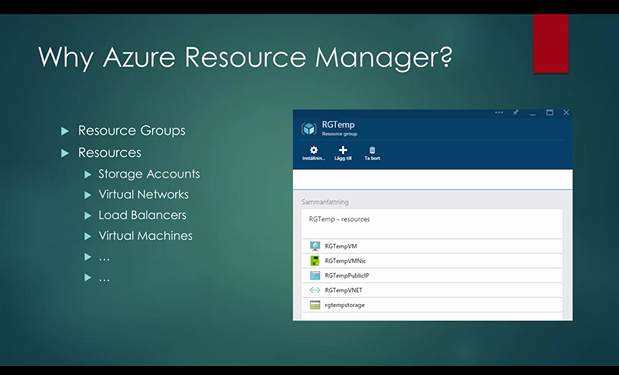Getting started with Azure Resource Manager (ARM)
Azure Resource Manager offers the ability to build application templates and easily leverage them to deploy and manage compute, network, and storage resources on Azure and in the future, Azure Stack. In this article we will walk you through some of the great resources that you can leverage to build a strong ARM knowledge.
Background
Azure Resource Manager (ARM) is relative new and will over time, replace Azure Service Management (ASM) that for many, are the current default, when working with Azure. You can, in many ways, compare it to the new and old Azure Portals, where ASM will represent the old portal and ARM is the new “Preview” portal.
What does it do?
ARM is everywhere! You are using ARM if you are building Azure services through the Azure Preview Portal, deploying via the ARM cmdlets in PowerShell or building and deploying JSON templates in Visual Studio.
Consider ARM the engine that builds and modifies your services on the Azure platform and there are many ways of telling it what to do.
Getting started
There are lots of great resources out there and more will be published as ARM is maturing. I have a few recommended resources below
At Microsoft Virtual Academy, we recently published a set of videos about ARM:
Building Infrastructure in Azure using Azure Resource Manager
At Deploy and Manage Virtual Machines using Azure Resource Manager Templates and PowerShell you can find a great article that goes into depth on working with ARM
If you are looking for a more Cloud Agnostic view on ARM, a whitepaper about Cloud Consistency with Azure Resource Manager can be found at TechNet Gallery
The tools
PowerShell is key to working with automation and ARM. If you have no prior PowerShell knowledge, this is actually a good place and absolutely central to what we are doing.
Visual Studio or a good .txt editor is central when working with templates. Visual Studio comes in a free version as well as professional editions. Check out the free Visual Studio Code, it will save you a lot of time while working with JSON templates. Any .txt editor will work, as long as it keeps the formatting.
The Future
ARM is here to stay and will be expanded to cover more Azure services. The future also brings a new product from Microsoft called the Azure Stack, an on-premises version of Azure. It will feature many of the services you know from Azure, and will be build on Azure Resource Manager.
This blog will continue to cover ARM in details and give you practical examples on how to use it.
Cheers,
